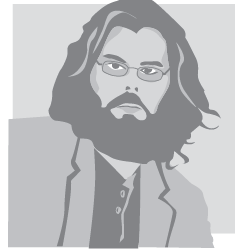It is no measure of health to be well adjusted to a profoundly sick society. Krishnamurti
 aNewDomain — The most recent season of “The Walking Dead” perfectly captures the daily struggle of returning veterans to fit back into a world that is sane, safe and orderly.
aNewDomain — The most recent season of “The Walking Dead” perfectly captures the daily struggle of returning veterans to fit back into a world that is sane, safe and orderly.
Hypervigilance is a key symptom of post-traumatic stress disorder. The person with PTSD is always guarded, always alert for danger. Easily startled, quick to anger, prone to violence, the person always takes the seat from which they can see all the exits and responds to every sudden noise by running towards the potential danger.
Car doors slamming outside produce an adrenaline rush, just as though they were a raging barrage of bullets.
And relaxation? That’s the worst. Good luck with that.
This all relates to predominant themes that run through The Walking Dead TV series. Here’s how, and why you should care.
Physical abuse through relaxation
Early in my career, I led a lifelong victim of physical abuse through a relaxation exercise. At the end of it, she knew she was supposed to relax, but told me she felt worse than ever.
“The more relaxed I get, the more anxious I feel,” she told me. “It’s like I want to run screaming out of myself.”
In “The Walking Dead,” in a walled town where the day has more to do with cocktail parties and baking cookies than with watching for the risen dead, Rick and his companions are having trouble adapting, too. With potentially bloody consequences.
Abraham Ford engages zombies at a construction site with glee on his face – finally, a situation he understands.
 Sasha sits restlessly in the clock tower and gets outside the walls whenever she can. Carol plays a double game, armed to the teeth in her mom sweaters.
Sasha sits restlessly in the clock tower and gets outside the walls whenever she can. Carol plays a double game, armed to the teeth in her mom sweaters.
Inside the walls is not reality. Rick asks, “How many of you do I have to kill to keep you safe?”
It’s a question always on the minds of the person experiencing PTSD: Don’t you see how unsafe the world is?
Hypervigilance is not just a symptom
Hypervigilance is not just a symptom. It is an adaptation to a profoundly sick world. And it’s a world in which the people who are supposed to love you and take care of you instead choose to abuse, hurt or exploit you. A world where you see your friends die or you’re forced to pull the trigger on other peoples’ friends to save your own. Where roadside litter might harbor death.
It’s a world where your patients in the psychiatric hospital might assault you for no reason that makes any sense.
A theme throughout the show is that of going crazy.
Sasha went pretty well off the rails during this last season. A few season previous Daryl had some intense conversations with his missing-presumed-dead brother on the way to the farm. Rick Grimes got some weird and intense phone calls from Heaven. And Father Gabriel coped with his guilt, grief and rage in some potentially maladaptive ways you’ll have to catch up on your viewing to see.
Die and live again only to be hunted by the living
In the horror-strewn alternative universe inhabited by “The Walking Dead,” society is profoundly sick. It is so sick that it is weary unto death. But even death cannot prevent the danger. Die and live again to be hunted by the living.
In “The Walking Dead,” the Claimers adapted to this sick society. The Wolves are well adapted to it, too. They’ve learned how to manipulate the Walkers into doing their dirty work.
But Rick, Sasha, Gabriel, Daryl and Carol all want to remain good people. They want to hold onto human values, which in fact turns out to be the fatal flaw they all share. These characters cannot adapt to the sickness of this new world, cannot adjust to it.
They are forced, therefore, to go crazy.
The most obvious and glaring example of this is Morgan. We see Morgan as the skipping stone sees the lake – in brief kisses of time, spending more time in the oxygen above. In the beginning, he tries to hold onto human values by not shooting his dead wife who wanders the street outside.
This choice costs him his son. The loss of his son pushes him out of sanity and into madness. In the episode “Clear” we find that Morgan has jumped the track and entered a state of madness.
He is sane enough to ward off a whole village with traps but is living life inside out, projecting his thoughts onto the walls where he can see them in a substitute for lucidity.
And at the end of the last season, he finally appears to join the cast proper. He’s a changed man. The right man for the environment, not adapted to it, but afloat in it.
Investigations into the use of hallucinogenic compounds demonstrate initial promise treating such things as depression, anxiety and especially PTSD. The madness inspired by such drugs lets us process our traumas without the interference of the rational mind, the mind that tries to make all the facts fit a theory. This mind overly applies reality to our problems making them impossible to solve.
The acid trip, though, takes away this barrier. We reach different conclusions, whole-mind conclusions, and get past our traumas the way we solve technical or creative problems in dreams.
PTSD is not a kind of madness. PTSD is a failure to go mad, the failed attempt to resolve the problems the world has thrown at us by adapting to them. It’s simply a failure to adjust to a sick society.
For aNewDomain, I’m the profoundly sick Jason Dias.
Cover image: LatinPost.com, All Rights Reserved. Inside image: Blastr.com, All Rights Reserved.













